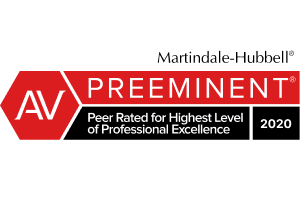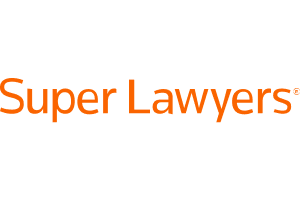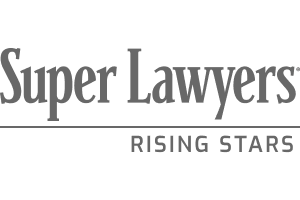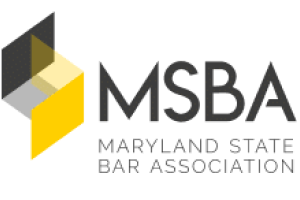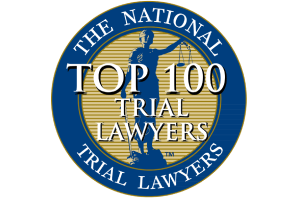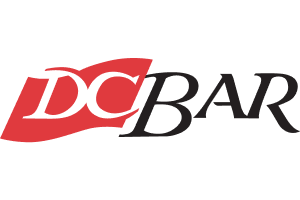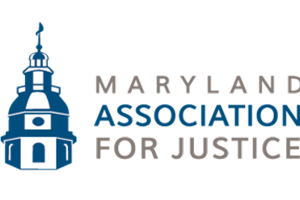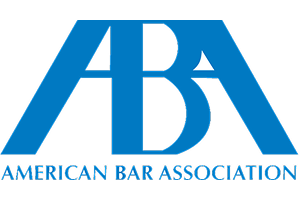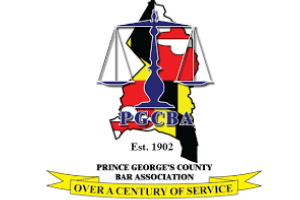Your Family
Miscellaneous Evidence Issues
Discovery/Objections to Evidence at Trial
The case of Food Lion, Inc. v. McNeill, 393 MD. 715 (2006) stands for the proposition that an attorney can’t wait until trial to object to the introduction of evidence when the objection should have been raised earlier. The issue involved whether something was timely provided during discovery. This case suggests that it is counsel’s responsibility to take a deposition, file a Motion to Compel or pursue further discovery if dissatisfied with discovery responses.
Discovery-Use of Deposition
Deposition testimony of a party can be offered at trial as long as the person remains a party to the case. If the person is no longer a party, the deposition testimony is no longer admissible unless unavailability for trial is demonstrated. See Laney v. Daniel.
Evidence/Expert Testimony Regarding Injury
Although normally required, there is case law that suggests expert testimony is not needed to prove a causal link between the plaintiff’s banging her head on a car’s sun visor during an accident and a bruise and subsequent loss of pigmentation of her skin. See Wilhelm v. State Traffic Safety Commission, 230 MD 91 (1962).
Federal Expert Testimony Regarding Malingering
The Fourth Circuit precedent in favor of exclusion of malingering testimony is found in United States v. Cecil, 836 F 2d, 1431,1441. Federal Rules of Evidence 704 permits an expert to testify on ultimate issues if the District Judge finds such evidence helpful but that principle has never been extended to the right of a psychiatrist to give an opinion on the credibility of a witness. Determination of credibility is one strictly for the jury. For a good discussion about malingering as evidence see the book written by Rick Friedman title Polarizing the Case-Exposing and Defeating the Malingering Myth.
Expert Commenting on Credibility
It is inappropriate for an expert to comment on the credibility of the Plaintiff. Determining credibility is solely within the province of the jury. See Globe Sec. Systems Co. v. Sterling, 79 Md. App. 303 (1989); Robinson v. State, 151 Md. App. 384 (2003); Hutton v. State, 339 Md. 480 (1995); Bohnert v. State, 312 Md. 266 (1988); Hall v. State, 107 Md. App. 684 (1966).
Expert Witness Opinion Work Product
These may not be discoverable, see Crowe Countrywide Realty Associates, Co., LLC v. Novare Engineering, Inc. 891 a. 2d 838 (R.I. 2006). However, after the 1993 amendments to the Federal Rules virtually everything appears to be discoverable. See Muscleman v. Phillips, 176 F.R.D. 194 (D.M.D. 1997).
Evidence/Expert Witnesses
An expert witness is required to prove medical and/or psychiatric conditions that are not patently obvious to a lay person. See Wilhelm v. State Traffic Safety Commission, 230 MD. 91 (1962).
Proving Lost Earnings and Impaired Earning Capacity
In order to prove lost wages and impaired earning capacity, see Stein on Personal Injury Damages, section 6:18. Expert testimony is required to establish a plaintiff’s accident related disability, but expert testimony is not generally required to establish impairment of earning capacity. However, in the case of a non-obvious injury, expert testimony is required to establish loss of future earning capacity. The real issue is often one of causality where the question is did the injury sustained by the plaintiff cause the loss of earning capacity, a factual question on which expert testimony may obviously shed some light.
Doctor Testifying From Another Doctor’s Records
See Maryland Rule 5-703. An expert can rely on hearsay or otherwise inadmissible evidence (including reports and records of treating doctors). Rule 5-704 allows opinions on the ultimate issue. Federal Rule 703 and 704 are similar. On the other hand, the doctor probably cannot testify to opinions of other doctors.
Enhanced Standard of Care-School Zone
There is case law that suggests there is an enhanced duty to be observant in a school zone. See Lavine v. Beebe 238 MD 365.
Photo of Minor Property Damage
One of the controlling cases regarding the use of photos is Mason v. Lynch 388 MD 37, 878 A 2nd 588. Essentially, the court has discretion regarding whether to allow use of photos of minor property damage in an action for personal injuries.
Skidding Cases
To deal with issues involving vehicles that skid see Larkin v. Baltimore Transit, 249 MD 305. Billmeyer v. State F/U/O. Whiteman 191 MD 418;Wolf v. State F/U/O Brown 173 MD 103; Trusty v. Wooden 251 MD 294.
Attorney Work Product
The leading Maryland case on attorney work product is EIduPONT v. Forman-Pack 351 MD 396, 718 A. 2nd, 1129.
Rule Preventing Social Security Number Disclosure
See Rule 16-1001 through 16-1011 and particularly 16-1007 (c) See also Commercial Law Article 14-3402. Social Security Numbers should not be disclosed in court documents.
Res Judicata And Collateral Estoppal
These doctrines only bind parties to prior litigation and those in privity with those parties. In other words, one can use these doctrines against someone who had their day in court but they cannot use it against someone who did not unless they were in privity with the person who had their day in court.
HIPAA-Defense Attorneys Interviewing Prior Treating Physicians
Generally, defense attorneys cannot informally interview plaintiff’s prior treating physicians under HIPAA regulations. See Austin v. Moreland, 288 GA. App. 270. The essence of the ruling is that HIPAA pre-empts state law and therefore precludes such contact.
Evidence of Intoxication
Issues involving the admissibility of a lay opinion on intoxication may occur in civil cases when a party seeks to comply with a rule that in order for evidence of intoxication to be admissible, the proponent of the evidence must demonstrate some causal connection between the allegedly intoxicated state of the person and his or her conduct of behavior. Mitchell v. Montgomery County, 88 MD. App 542 (1991). The results of breath and blood tests for alcohol are admissible and certain presumptions apply to their results. See MD. Code, Cts. and Jud. Proc. Art. Section 10-307. But such tests results are not necessary for a conviction in a criminal case or a finding of liability in a civil case, and in their absence, other competent evidence may also be used to prove intoxication. See Major v. State, 31 MD App 590, 593-94 (1976). See also Nast v. Lockett, 312 MD 343, 355 (1988). The Court stated “we emphasize that in both civil actions and criminal causes, competent evidence other than the results of chemical analysis of the person’s blood may be induced to show that person’s degree of impairment. See also Section 10-308 of Courts and Judicial Proceedings Article. The admissability of lay opinions is governed by Rule 5-701. If the witness is not testifying as an expert, the witness’s testimony in the form of opinion or inference is limited to those opinions or inferences which are: 1) rationally based on the perception of the witness and 2) helpful to a clear understanding of the witness’s testimony or the determination of a fact in issue. In his book on Maryland evidence law, Chief Judge Murphy of the Court of Special Appeals summarized the rule on the admissibility of lay opinions for alcohol or drug intoxication. Essentially, a witness can express an opinion about a person’s age and whether someone was angry, arrogant, boisterous, excited, nervous or under the influence of alcohol because these are kinds of observations we make on a daily basis.” Bruce v. State, 328 MD 594 (1992). On the other hand, a lay witness is not permitted to express an opinion that someone was under the influence of a particular drug. Persons without some demonstrated expertise are prohibited from expressing an opinion that a person was under the influence of drugs because observations of persons on drugs are considered so unusual that the average person is unlikely to make this observation on a frequent basis. Matthews v. State, 68 MD App 282 (1986). See Maryland Evidence Handbook Section 603 (B) et 249. See also Warren v. State, 164 MD App 153. No field sobriety tests were performed and the defendant declined to take a breath test. However, there was a strong odor of alcohol, the defendant’s eyes were watery and bloodshot, the defendant fumbled with his wallet while searching for his driver’s license and passed over the license several times and his speech was incoherently slurred. The officer had to laser him after he did not respond to repeated requests to turn off his car’s ignition and get out of the car. After he got out of the car, he was very wobbly and unsteady on his feet and the officer leaned him against the car. At the police station, the defendant collapsed while walking up steps and vomited all over the floor. The Court held that the judge was within his discretion in admitting those lay opinions. The Court felt that perceiving whether someone is intoxicated does not require specialized knowledge because the condition of intoxication and its common accompaniments are a matter of general knowledge. In a civil case it is probably necessary to show evidence not only of the smell of alcohol but also to the extent of any impairment or as how any impairment resulted in the accident. Each case will turn on its own facts.
Evidence of use of Alcohol or Drugs Against a Plaintiff
There sometimes arise issues as to the sobriety or use of drugs of the Plaintiff in an action. See Johnny Allen-Mitchell v. Montgomery County, 88 Md. App. 542, 596 A. 2nd 93 for case law on the topic.
Drunk Passenger
See Maurer v. Pennsylvania National Mutual, 131, September term, 2006 in the Court of Special Appeals of Maryland. It would be improper for a court to instruct a jury under the motor vehicle provisions of the Maryland Code regarding driving while intoxicated or impaired as it relates to a passenger and suggest that it is evidence of contributory negligence. Moreover, showing a violation of the relevant statute is not actionable unless it is proximate cause of the harm, see Atlantic Mutual v Kenny, 323 MD 116 (1991). Similarly, Maurer’s use of his false identification was not the proximate cause of his injuries in this case.
De Benne Esse Depositions
Maryland Rules of Procedure, Rule 2-415 is the Rule one needs to consider regarding objections made at a de benne esse deposition. Objections made during the deposition shall be recorded with the testimony. An objection to the manner of taking the deposition to form of questions or answers to the oath or affirmation, to the conduct of the parties or any kind of error or irregularity that might be obviated or removed if objected to at the time of its occurrence, is waived unless a timely objection is made during the deposition. An objection to the competency of a witness or the competency, relevancy or materiality of testimony is not waived by failure to make before or during a deposition unless the ground of the objection is one that might have been obviated or removed if presented at that time. The grounds of an objection need not be stated unless requested by a party. If the ground of objection is stated, it shall be stated specifically, concisely in a non-argumentative and non-suggestive manner. If a party decides to make an objection for the record during the taking of a deposition that reasonably could have the effect of coaching or suggesting to the deponent how to answer, then the deponent, at the request of any party, shall be excused from the deposition during the making of the objection.
Often, counsel agree at the outset of the deposition, that the grounds for the deposition shall be brief and on the record during a video deposition itself and any longer explanation of the grounds may take place on the transcript only for ease in editing the video deposition at trial in case a court makes a ruling requiring editing.
Introducing Email Messages Into Evidence
See Lorraine v. Markel American Insurance Company, 241 FRD 534.
Fifth Amendment Privilege in a Civil Case
See Faith v. Keefer, 127, MD App. 706, denied 367 MD 191.
Reducing Future Lost Wages to Present Value
The Plaintiff must prove future lost earnings but also must reduce the claim to what is called present value. This essentially means what it would cost to purchase an annuity, for example, today that would pay out what the future lost wage claim would be. See Lewin Realty III, Inc. v. Brooks 138 Md. App. 244 ,771 A. 2nd 446.
Substantive Change to Deposition Testimony
See Rule 2-415 (d). This does allow substantive changes but it also allows further discovery.
Emotional Trauma Without Physical Injury
A person can complain of emotional distress as a result of observing another person’s injury if the jury is persuaded that it resulted in physical injury or any objective manifestation. For example, a person who physically pulled dogs off of a child, there could be a recovery for emotional distress. See Beynon v. Montgomery County CableVision L.P. 351 MD 460, 497 (1998). Damages for emotional distress or mental anguish are recoverable in Maryland provided it is proximately caused by the wrongful act of the defendant and it results in a physical injury or is capable of objective determination. See also Bowman v. Williams, 164 MD 397 (1933) Where a person observed a truck going out of control on a street and crashing into the basement below him where his two children were. The plaintiff was not physically injured but suffered a severe emotional injury. In this case, the person was found to be in the “zone of danger”. See also Scott v. John H. Hampshire, Inc., 246 MD 171 (1967); Boddie v. Scott 124 MD App 375 (1999). For an eloquent discussion by Justice Cardozo, see Wagner v. International Railway Company, 133 N.E. 437 (N.Y. 1921). There is a distinction however, that there can be no recovery for emotional distress caused by negligently inflicted damage to a person’s property. The key in these cases is whether a person is in a zone of danger and therefore may very possibly suffer injury.
Pre-Existing Injury
See Seites v McGinley, 84 MD App 292 (1990) that speaks to the apportionment issue for a pre-existing injury versus a new injury. It is the plaintiff’s burden to prove the apportionment.
Mentioning Insurance Companies at Trial for Uninsured Claim
See King v. State Farm Insurance Automobile Co., 157 Md. App.. 287 (2004). In this case, the individual tortfeasor was not a party in the case at trial so it is different than a case where the party is at trial. There are out of state cases where the party is at trial that support naming the insurance company. See Earle v. Cobb, 156 S.W. 3d 257 (Ky. 2005) and Lomez v. Geico General Insurance Co., 803 So. 2d 593 (Fla.2001). Also consider the Court of Appeals decision in State v. Bowers, 349 Md. 710 (1998) which expresses disfavor of “sham” trials”.
Sudden Emergency
See Haney v. Gregory, a Court of Special Appeals opinion issued November 30, 2007. In this rear-end collision the defendant claimed a sudden emergency and got such an instruction. The court held that the evidence did not support the giving of the instruction.
Last Clear Chance
See Nationwide Mutual insurance Co. v. Gail Anderson, 160 Md. App. 348 (2004). The Court of Appeals reviewed the last clear chance doctrine and indicated it required primary and contributory negligence of the parties, a showing by the plaintiff of something new and sequential which affords the defendant a fresh opportunity (of which the defendant fails to avail himself or herself) to avert the consequence of his/her original negligence. In this case the estate of a 16 year old intoxicated, unlicensed driver sued the 29 year old defendant/passenger on the theory that the passenger had the last clear chance to prevent the minor from crashing into another car, causing the vehicle in which they were riding to flip over and coming to a rest on its roof, killing the 16 year old driver. Because the negligence of the parties was concurrent and there was no fresh opportunity on the part of the passenger to avid the danger and because the party in helpless peril and the party in position to avoid danger by being in control of the instrumentality were the same person, last clear chance was inapplicable.
Claiming Medical Bills Discharged in Bankruptcy in Third Party Claim
The right to recover the value of medical care provided gratuitously should be argued also as the basis for using medical bills discharged in bankruptcy. Similarly, the plaintiff can rely on the collateral source rule case of Plank v. Sommers, 203 MD 552 (1954). In this case, a Court of Appeals adopted the rule that where the hospital and medical services are furnished gratuitously to the injured party, he can recover the value of those services from the tort feasor. One could also argue that the authorization and assignment prepared and signed by the plaintiff requires the medical bill to be paid out of any recovery and therefore it should be permitted in evidence. Similarly, that result would be consistent with the philosophy of bankruptcy. Hernandez v. Southern Hospital Association, Inc., 319 MD 226 also suggests that a patient’s obligation to the health care providers for expenses where an executed assignment has been provided is not discharged in bankruptcy. The reason is that the assignee of it chose in action acquires an equitable lien upon the outcome which, unless disallowed or voided, survives the bankruptcy.
Lack of Supervision Theory
With regard to lack of supervision on a school ground, look at the case of Segerman v. Jones.
Police Report Admissability
See Aetna Casualty Ensurity Company v. Kuhl, 296 MD 446 (1983).
Evidence/Authentication of Medical Bills
See Rule 5-902 b. Obtain a written certificate from the provider.
Owner of Property Competent to Testify as to Value
See Lakewood Engineering and Manufacturing Co., INC. v. James Quinn, et al. , 91 Md. App.. 375, 604 A. 2d 535 (1992). This stands for the proposition that a person can give the value of an item of normal consumer goods as that does not take any expertise. However, if a rare painting or a house, for example, were involved, an expert would be necessary. See also Hale v. Hale, 74 Md. App. 555; Bastian v. Valentina Laffin, et al, 54 Md. App. 247 (1983); Smith v. Potomac Electric Power Co., 236 Md. 51(1964).
Personal Representative can Waive Attorney Client Privilege
See Benzinger v. Hemler, 134 Md. 581(1919) which stands for the proposition that if there is a dispute about the Will, the privilege will be deemed waived. After death, the Personal representative is permitted to waive the privilege as well.
Boulevard Rule
See Barrett v. Nwaba decided October, 2006 which discusses the rights of a person entering a right lane of a multi-lane road when another vehicle moves into that lane that was already on the road. The boulevard rule is discussed at length in the case of Dunnil v. Bloomberg, 228 Md. 230, 179 A. 2d 371, 374 (1962). The court stated that only in rare instances is it proper to submit to the jury the issue of negligence or contributory negligence on the part of the favored driver. Nor does the fact that the favored driver was exceeding the speed limit somewhat of itself constitute negligence or excuse the defendant’s negligence. See also Covington v. Gernet, 280 Md. 322 (1977); Schwier v. Gray, 277 Md. 631 (1976); Brown v. Ellis, 236 Md. 487 (1964); Dean v. Redmiles, 280 md. 230 (1977); Harper v. Higgs, 225 Md. 24 (1961); Kopitsky v. Boyd, 277 Md. 491 (1976). Many of these cases suggest it is not appropriate to try to make precise calculations about speed which cannot be expected of a reasonably prudent favored driver when immediately confronted by an intrusion upon his right of way.
The so called boulevard rule is codified in Md. Code, Transportation Article, Section 21-403, 21-404. It imposes a duty on a driver entering or crossing a highway from another highway, private roadway, driveway or other place to stop and yield the right of way to any through traffic on the highway. See Barrett v. Nwaba, 885 A. 2d 392 (Md. 2005); Washington Metro Area Transit Auth. V. Seymour, 387 Md. 217 (2005). The driver on the favored road is not required to slow down at every intersecting highway.
Conflict of Laws
Maryland applies the substantive law of the place where the tort occurred. For example, if an accident happens in Delaware it would be likely to apply Delaware law because there is no cap on damages and there is comparative negligence. In Erie v. Heffernon, decided by the Court of Appeals on April 10, 2007, the Court held that even though Maryland had strong public policy in favor of non-economic cap, the Delaware law thought different and did not offend Maryland law and therefore Maryland would not apply the cap. On UM or UIM claims, since these are contract actions, Maryland applies the law of the place where the contract is entered into.
Smoking as Failure to Mitigate
See Hopkins v. Silber 141 MD App 319 (2001).
Evidence of Medical Provider Sanctions
See Maryland Code Health Occupations Article, Section 14-410 (a). Evidence indicating sanctions against doctors is not admissible.
Vehicle Market Value/Evidence
NADA books and Kelly Blue Book are not public agencies. Thus Rule 5-902 (5) does not apply. 5-902 involves authentication and does not address the hearsay issue. Rule 5-803 (b) (17) provides an exception to the hearsay rule for “market quotations, tabulations, lists, directories and other published compilations, generally used and reasonably relied on by the public or by persons in particular occupations.” Section 7-202 (d) of the Estates and Trusts Articles allow these guides to be used to appraise a motor vehicle in connection with the preparation of an inventory for a decedent’s estate.
Causation and Damages
In cases where it is difficult to prove causation, the plaintiff may rely on whether an injury was a substantial factor in causing the subsequent treatments and/or surgery. This would appear to be supported by the case of Bartholomee v. Casey, 103 MD 34 (1994). The Court indicated that a plaintiff could recover damages that are proved with reasonable certainty to have resulted as the natural, proximate and direct effect of the tortuous misconduct, citing Jones v. Malanoski, 299 MD 257 (1984). The Court went on to say that where the conduct of the defendant was a substantial factor in bringing about the suffering of an injury, such conduct will be deemed to have caused the injury. See W. Page Keeton, et al., Proser and Keeton on Torts, Section 41 et 266-68 (5th Ed. 1984 and sup. 1988). This is also adopted or embodied in the Restatement Second Torts, Section 431. See also Reed v. Campagnolo, 332 MD 226 (1993); Owens-Illinois v. Armstrong, 326 MD 107 (1992); Dominion Construction, Inc. v. First National Bank of Maryland, 271 MD 154 (1974).
Evidence Authentication and Hearsay-Webpage
In order to introduce a webpage from a website, one would need to not only show that it was on the particular website but that it was authentic. A third party, for example, might have hacked into the site and changed it. See United States v. Jackson, 208 F. 3d 633 (7th CIR. 2000). Another important opinion regarding authenticating electronically stored information can be found in Lorraine v. Markel American Insurance Company, 241 F.R.D. 534 (D.Md 2007).
Wiretap or Secret Recording of Conversations
Any one party recording of a conversation in Maryland is illegal and is not admissible in evidence. If a conspiracy is alleged and a court order is obtained it might then be admissible. See Courts & Judicial proceedings 10-405(b). the taping must otherwise be consensual.
Res Ipsa Evidence
See the case of Norris v. Ross Stores, Inc., 159 Md. App., 3232, 859 A.2d 266 (2004). The case stands for the proposition that shelves in a department store are within the exclusive control of the proprietor absent evidence that no customer was around them when they collapsed.
Insurance Files Protected by Privilege
Each case will be decided on its own merits. See Cutchin v. State, 143 Md. App. 81, 792 A. 2d 359 (2002) which adopted a test to determine insurer communications are privileged. The test seems to be whether the dominant purpose of the communication was for the insured’s defense and whether the insured had a reasonable expectation of privacy. The court placed the burden on the party claiming the privilege. If the statement was made at the adjuster’s request, the adjuster was not a lawyer or acting on behalf of counsel, and the statement was not requested by an identified counsel for his/her use thwe statement may be discovered.
Federal Court Expert Witness Disclosures Under 26(a)(2)
Detailed disclosures need not be provided for “hybrid” fact/expert witnesses such as treating physicians. This is consistent with Sullivan v. Glock, Inc., 175 F.R.D. 497 where the court held that to the extent that the source of the facts which form the basis for a treating physicians opinions derive from information learned during the actual treatment of the patient-as opposed to being subsequently supplied by an attorney involved in the case concerning the condition or injury, then no 26(a)(2) disclosure is required. However, when a physician relies on materials provided by counsel or receives materials outside the scope of his or her treatment of the patient, , then the requirements of 26(a)(2) apply and the failure to satisfy those requirements mandates exclusion of the witness’s testimony pursuant to Fed. R. Civ. P. 37(c)(1). See also Jay E. Greenig, Jeffrey Kinsler, Handbook of Federal Civil Discovery and Disclosure, Section 1.38 (2nd ed. 2006). See also Hall v. Sykes, 164 F.R.D. 46, 48-49 and Wreath v. United States, 161 F.R.D. 448.
Federal Court Expert Witnesses
See William Daubert, et ux., Individually and as Guardian ad Litem for Jason Daubert, et al Petitioners v. Merrell Dow Pharmaceuticals, Inc., 509 U.S._, 125 L Ed 2d 469, 113 S. Ct _ . See also Samuel v. Ford Motor Company, et al, 96 F. Supp. 2d 491. See Fed. Rules Evid. Rules 104(a), 702, 28 U.S.C.A.


